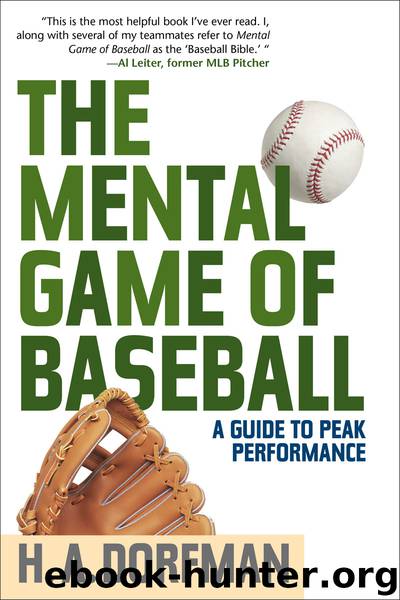The Mental Game of Baseball by H. A. Dorfman & KARL KUEHL

Author:H. A. Dorfman & KARL KUEHL
Language: eng
Format: epub
ISBN: 9781630761837
Publisher: Lyons Press
CONCENTRATION EXERCISE GRID
Starting with 00, find numbers in sequence and, using a pencil, draw a diagonal line through each square. Be certain the line is made in the same way in each square. The second time you use this grid, draw a diagonal going the other way across the square. (If you use the grid a third time, you can draw a horizontal line; after that, make up a new grid; you know this one too well.)
There are any number of concentration exercises any interested person can find in books. They range from the use of a Yantra (a white square in the middle of a larger, black square) to mathematics exercises. All of them are useful—helpful—if the user approaches them with appropriate motivation. This, naturally, is the case with any exercise we’ve already mentioned, and with those, specific to baseball, which we will now provide.
Before presenting these concentration exercises, we would remind the reader that some players already use techniques—these or their own—to enhance their performance. They are all part of their “normal” practice routine and game strategy. But, as has become clear by now, these players are exceptions. To our mind, those interested enough to come this far in the book are also interested in joining the ranks of the exceptional players.
CONCENTRATION EXERCISES AT THE BALL PARK
*Actually, this exercise, for hitters, can be performed at local batting cages or at the field. The purpose of this simple practice is to help the hitter learn to concentrate on the ball more effectively. His goal is always to see the ball well, but somehow hitters bring distracting thoughts into batting cages. Their origins are: long ball bets with teammates; jumping in and out to get a few last swings; an on-going conversation with someone outside the cage; a b.p. pitcher whose pace doesn’t allow the hitter to gather himself. And so on. Rarely, under these conditions, does a player have good concentration.
The exercise: Take the first five pitches. Know that you’re not going to swing, so you can devote your entire attention to seeing the ball well. Follow it all the way. Look for the spin; see it as it goes by. Under conditions such as those above, the b.p. swing usually accomplishes little, if anything, insofar as concentration is concerned. Contact may be made, but a poor habit is being reinforced. Make the habit one of seeing the ball well.
Another benefit will accrue to those of you who routinely set aside a number of b.p. “takes” for the sake of concentration. You’ll soon be sensitive to the difference in the quality of concentration during the drill and during games, when you’re swinging. (And during your b.p. swings, of course.) You can develop a grading system based on how well you saw the ball—what kind of a “look” you had—so that after each at-bat in a game, if you use a scale of 1–5, with 5 being the best, you can grade yourself. (“I had a 4-look on that pitch,” etc.
Download
This site does not store any files on its server. We only index and link to content provided by other sites. Please contact the content providers to delete copyright contents if any and email us, we'll remove relevant links or contents immediately.
The Inner Game of Tennis by W. Timothy Gallwey(3576)
Unstoppable by Maria Sharapova(3484)
Urban Outlaw by Magnus Walker(3343)
Crazy Is My Superpower by A.J. Mendez Brooks(3334)
Mind Fuck by Manna Francis(3132)
The Social Psychology of Inequality by Unknown(2941)
The Fight by Norman Mailer(2849)
Unstoppable: My Life So Far by Maria Sharapova(2456)
Accepted by Pat Patterson(2309)
Futebol by Alex Bellos(2301)
Going Long by Editors of Runner's World(2298)
Motorcycle Man by Kristen Ashley(2200)
Sea Survival Handbook by Keith Colwell(2199)
The Happy Runner by David Roche(2195)
Backpacker the Complete Guide to Backpacking by Backpacker Magazine(2194)
The Sports Gene: Inside the Science of Extraordinary Athletic Performance by David Epstein(2135)
Peak: Secrets from the New Science of Expertise by Anders Ericsson & Robert Pool(1989)
Endure by Alex Hutchinson(1968)
The Call of Everest by Conrad Anker(1868)
